After a day of cycling and the early morning hustle of catching the famous sunrise at Angkor Wat, we were ready to go in further on our tuk-tuk to explore the other temples. Among them are my two favourites – Bayon (inside Angkor Thom) and Ta Prohm.
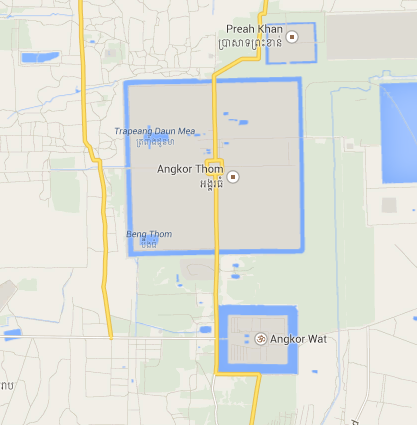
Angkor Thom – “Great City” in Khmer – was the last capital city of the Khmer empire, founded by Jayavarman VII who came to power after the defeat of the Cham invaders in 1181. The walled city is almost a perfect square, enclosed by 8m high walls and a wide moat, guarded by Naga Kings on its bridges. It has five monumental gates (north, south, east, west; plus an extra in the eastern wall), fronted by gigantic Bayon-style faces, interpreted to be that of bodhisattva Avalokiteshvara’s.
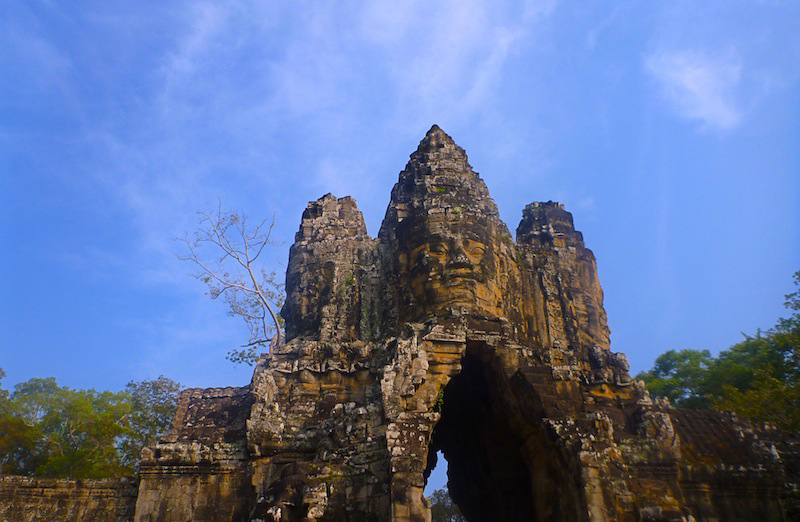
The Bayon is perhaps the most well-known temple inside Angkor Thom. Built as the official state temple of the king, it stands at the heart of Angkor Thom. Its most distinctive feature – massive four-faced towers thought to represent Bodhisattva Avalokiteshvara, or King Jayavarman VII himself.
As the king undertook an ambitious temple building programme during his reign, the Bayon was built in a hurry, thereby lacking the intricate carvings found in Angkor Wat. It is also less well preserved even though it was built nearly 100 years after Angkor Wat. Nevertheless, the sheer scale of the Bayon made the temple a sight to behold.
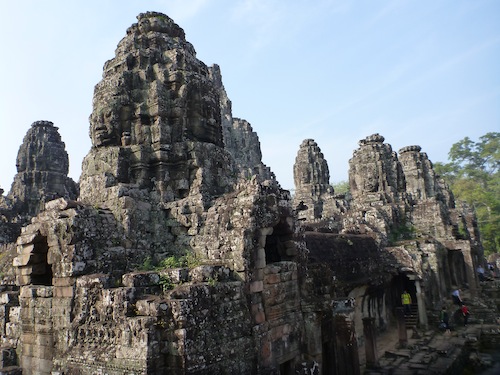
A series of temple ruins ensued. After the Bayon, we walked down the route to Baphuon, Phimeanakas, the Terrace of the Elephants and the Terrace of the Leper King before heading out to Ta Prohm.
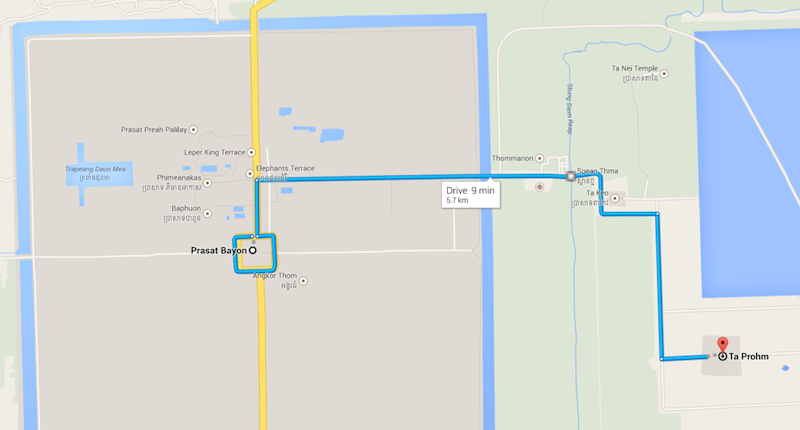
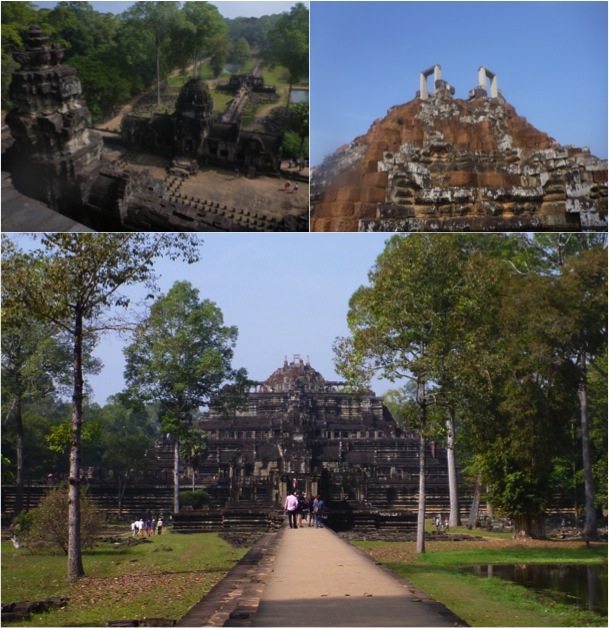
By then, we were starting to feel the ‘temple fatigue’ creeping in – especially since we woke up so early to catch the sunrise. But there was one last temple we simply couldn’t miss.
After stopping for lunch at a random food stall within the archaeological park (crappy instant fried noodles for USD5), we took a 10min tuktuk ride to Ta Prohm.
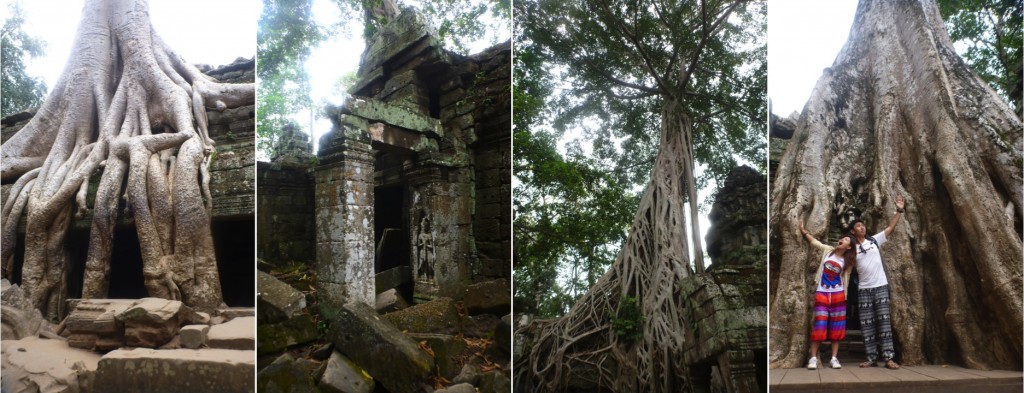
Ta Prohm was founded by King Jayavarma VII as a Buddhist monastery in honour of his family, the main temple image modelled after his mother. What makes it so unique is the fact that much of Ta Prohm has been left preserved the way it was found – overgrown with trees creeping over its ruins. It was also made popular as the film setting of Tomb Raider and is on the UNESCO World Heritage site list today.
Personally, I loved how organic and untouched the place felt. It was a joy wandering around the disorganised temple grounds and the eerie, jungle setting made us feel like we walked right into an adventure book.

As we skipped around the ancient ruins and had our fair share of fun, I couldn’t help but notice the bunch of workers donning yellow helmets nearby, chipping away blocks of stones with each hit. They would then attempt to fit it between standing blocks of the ruin, like a jigsaw puzzle piece. But most of the time, it doesn’t fit nicely, leaving them to start the process all over; repeatedly chiselling it into the desired shape and size.
It was a timely reminder of the mammoth task it was to restore to the present state of Angkor Wat, Angkor Thom and more. It’s truly amazing how far it has come to. All of a sudden, I felt a deepened sense of appreciation towards the rich archaeological wonders that surround me.

Read more: Tips on visiting Angkor Wat
5 replies on “Other than Angkor Wat: Temples worth a visit”
[…] We caught it! (Read about it here) […]
[…] from last two days’ temple overdose, we decided to spend our last day in Siem Reap outside the Angkor Archaeological Park. Instead, we […]
[…] Next: Day 5: Sunrise at Angkor Wat (we actually woke up in time!) […]
[…] 3 […]
[…] Next: Exploring Angkor Thom (Bayon -> Baphuon -> Phimeanakas -> Elephants Terrace -> Leper Kin… […]